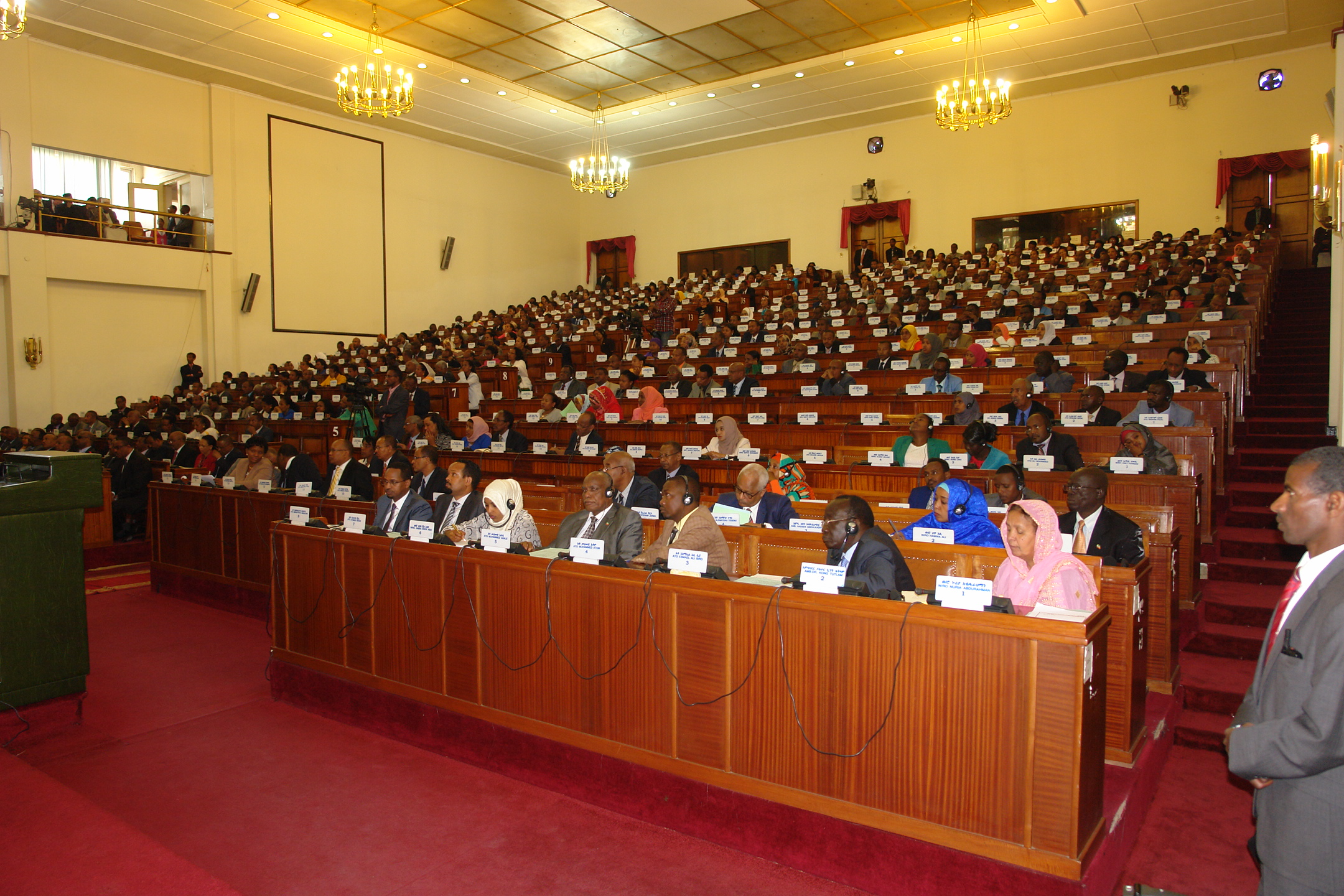Addis Ababa (HAN) November 5.2016.Public Diplomacy & Regional Security News. new cabinet, new plan, new strategy, increasing new powers for Prime minister post, and new direction?
The new cabinet is one of Ethiopia’s most ethnically diverse and includes newcomers from the Oromiya region, Amhara Region and Somali region, the center of grievances towards EPRDF ruling system.
Ethiopia’s new powerful Prime Minister Hailemariam Desalegn swore in a group of technocrats and new finance and foreign ministers on Tuesday in a reshuffle meant to respond to grievances behind six months of violent protests.
The House of People’s Representatives (HPR), whose 547 seats are entirely controlled by the ruling EPRDF and its affiliates, has unanimously approved the new 30 cabinet ministers proposed and presented by Prime Minister Hailemariam.
Of the 30 previous members of the cabinet, PM Hailemariam appointed 15 new ministers, of whom five are non-party members – a conspicuous departure from the party’s tradition. He reshuffled six ministers from the previous government to hold different ministry offices, while the remaining nine retained their former positions.
The major change in the 21 new ministers was however the replacement of Dr. Tedros Adnahom as Minister of Foreign Affairs and Getachew Reda, Minister of Government Communication Affairs Office. Both are now replaced by two senior officials, Dr Workneh Gebeyehu and Dr Negeri Lencho respectively, from the OPDO, the sister party governing the Oromia regional state, a region rocked by non-stop protests in the last one year. The list for the other new ministers is as follows:
Tagese Chafo, Minister of Public Service and Human Resource Development, Dr Abreham Tekeste, Minister of Finance and Economic Cooperation, Dr Bekele Gulado- Minister of Trade, Dr Eyasu Abrha, Minister of Farming and Natural resources, Professor Fekadu Beyene- Minister of Livestock and Fishery, Ahmed Shide, Minister of Transport, Dr Engineer Getahun Mekuria, Minister of Science and Technology, Dr Ambachew Mekonnen, Minister of Urban Development and Housing, Engineer Aisha Mohammed, Minister of Construction, Dr. Engineer Sileshi Bekele, Minister of Water, Irrigation and Electricity, Motuma Mekassa, Minister of Mines Petroleum and Natural Resources, Ristu Yirdaw, Minister of Youth and Sports, Dr Gemedo Dale, Minister of Environmental, Forest and Climate Change, Kebede Chane, Minister of Ethiopian Revenues and Costumes Authority, Dr Hirut Woldemariam, Minister of Culture and Tourism, Demitu Hambissa, Minister of Women’s and Children’s Affairs, Dr Girma Amente, Minister of Public Enterprise, Dr Shiferaw Tekelemariam, Minister of Education, and Professor Yifru Berhane, Minister of Health.
The nine who have remained in their ministerial positions are: Demeke Mekonnen, Deputy Prime Minister, Kassa Tekleberhan, Minister of Federal Affairs and Pastoral Area Development, Siraj Fegessa, Minister of Defense, Ahmed Abitew Minister of Industry, Dr Debretsion Gebremichael, Minister of Communication and Information Technology, Abdulfetah Abdulah, Minister of Labor and Social Affairs, Getachew Ambaye, Attorney General, Dr Yinager Dese, Commissioner of National Planning Commission, Asmelash Woldesilasie, Chief Government Whip. Of the 30, only three are women.
PM Hailemariam also scrapped previous ministerial posts known as “cluster coordinators with a rank of deputy prime minister” and the posts of advisor to the prime minister, often held by retired party officials. Speaking of the ministerial posts as “cluster”, PM Hailemariam told the parliament that it was deemed unnecessary because it was “redundant.” These positions were introduced following the death of the party’s strongman Meles Zelawi and the appointment of Hailemariam as a Prime minister.

Leave a Reply